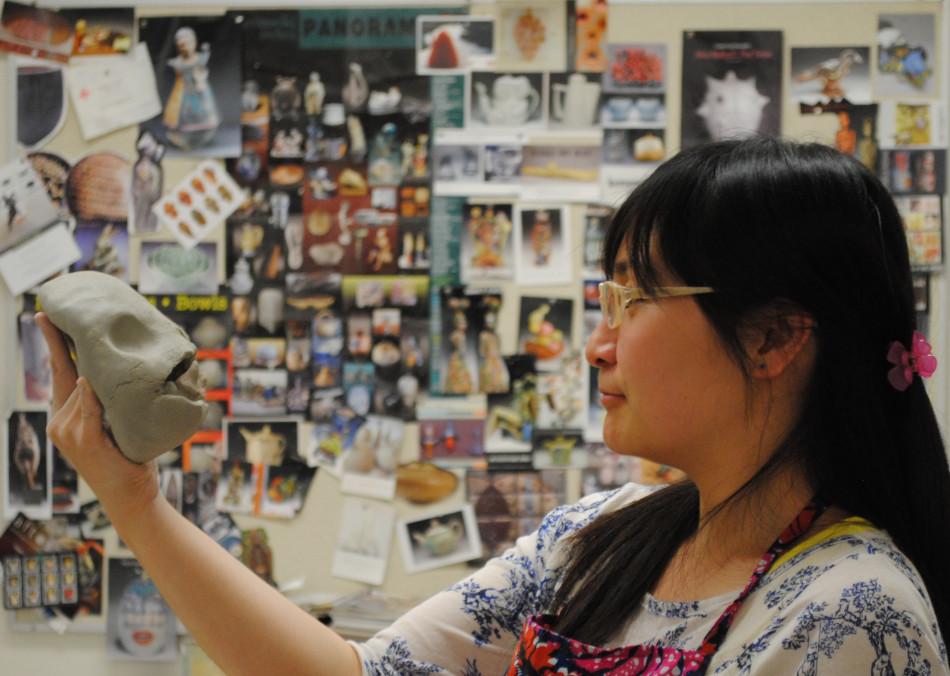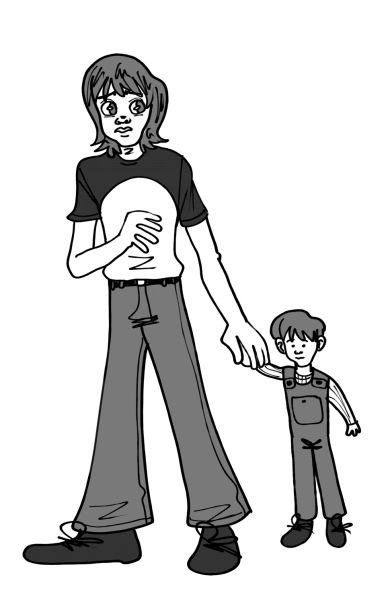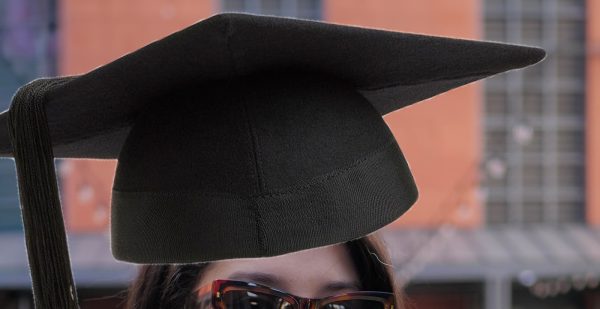Asymmetry: ceramics and the truth of life.
“Asymmetry is the truth of life,” artist and sculptor, Tomoko Nakazato told the audience during her guest lecture at Skyline on Monday March 24, in which she expressed her love of duality, and the important role it has played in her art.
Nakazato spoke to a small crowd of about 15 people from behind a workbench in the ceramics studio. The intimate setting lent itself perfectly to Nakazato’s quiet congeniality. While she talked, she busied her hands manipulating large hunks of clay and porcelain into a figure in her usual unusual style, and she encouraged the audience to crowd around and watch her work.
It seemed as though the audience was only waiting for permission. Though few in number, those in attendance displayed eagerness at the opportunity to meet Nakazato, and watch her do her thing.
“Students just connect with her work,” said Tiffany Schmierer, Associate Professor of Art, and long time friend of Nakazato. “I think it crosses a lot of different things, figurative, animation, the characters, the storytelling. When I brought it up at the meeting, I said, ‘who do you guys want to bring?’ and right away they all said, ‘Tomoko! Tomoko!’”
“She’s just so down to earth,” Miku Mendoza, president of the ceramics club, said. “She’s outgoing, and I didn’t know she was so easy to talk to.”
Outwardly, Nakazato is an unassuming woman. It’s through her work that she channels her creative inspiration. She creates cartoonish characters – sometimes human, sometimes animal – often violently entangled with props like power poles, nuclear reactors, or tentacled sea monsters, and dripping in ooze. Each piece is then glazed in eye-popping Technicolor.
“It’s kind of a mixture of creepy, but cute,” Mendoza said.
To Nakazato, this is life. Violence, intensity, happiness, tranquility. This is how she describes her work as well as the world she lives in.
“I don’t really see things as, this is one way, this is happy, or this is violent.” Nakazato said. “It’s part of what I see in this world, so it becomes manifested.”
When talking about her work, she used touching and comical anecdotes about her life to reveal exactly when, where, how, and why each piece came to be. Her stories touched on everything from her mother’s experiences during WWII, to the traditions of the monks at a particular shrine in Japan, to the Fukushima nuclear disaster.
Much of her influence came from her youth in Japan. Nakazato grew up in Tokyo, not far from the urban center, and she has a deeply rooted appreciation for what that means. The bright colors, shiny textures, busy culture, and materialism of modern Tokyo are all lovingly manifested in her art.
After moving to San Francisco at the age of 18, she pursued her undergrad at San Francisco State, and eventually moved to Hawaii as an artist-in-residence at the Donkey Mill Art Center.
It was here that her love-hate relationship with nature blossomed. She couldn’t deny the simple majesty of an island sunset right outside her window, or the intricate beauty of a sprawling lava field, but nature can also be downright terrifying. When the sun goes down, the mosquitoes come out in force, and before a lava field can be beautiful it must be horribly destructive.
“It’s a little sad, but I don’t like not looking at those things,” Nakazato said, as she flipped to a slide of adorable animals covered in petrol, then another of a moose being eaten alive by an alpha predator.
She then claimed that a sculpture of a baby being attacked by miniature wolves was inspired by her love of the “Twilight” movies, and broke into guilty laughter.
“I think I’m a team Jacob,” Nakazato said. “I thought about it a long time. I swapped a couple of times, but yeah, I think I’m a Jacob.”
It’s in moments like these that one can see how Nakazato’s contrasting views of the world compliment each other so well. Then, and only then, is the true beauty of her work revealed. It is a serious expression, of serious emotions, that never takes itself too seriously.
It’s asymmetrical, but it’s an expression of truth nonetheless, because that’s life as Nakazato sees it.



















